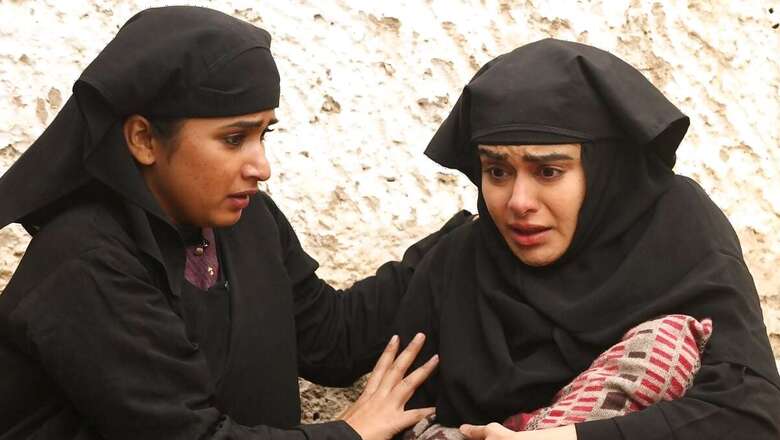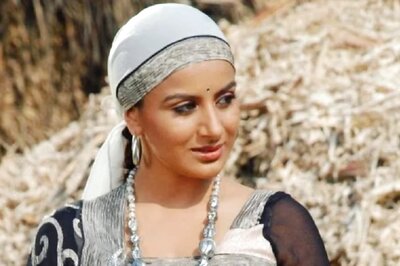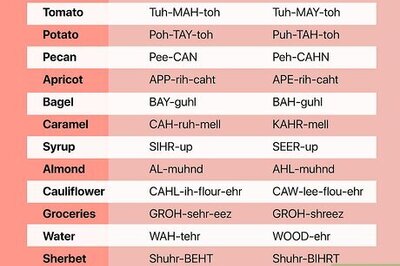
views
The opposition to film The Kerala Story is yet another attempt to ignore the elephant in the room. And the name of this elephant is Islamic radicalisation in India. So the larger debate shouldn’t be about the film or conversions in Kerala only. These are only offshoots of a larger and now deep-rooted malaise — Islamic radicalisation in India.
But first about Kerala. It is a well-known fact that there is a conversion industry in Kerala and the Islamists there have promoted it. The forced conversions and Islamic radicalisation are nothing new to Kerala. The outcome of ignoring this radicalisation could be disastrous. One needs to learn from the past otherwise one is condemned to repeat it. Hence, one must revisit what happened in 1921 during Malabar riots in Kerala.
Kunjahammed Haji, a radical Islamist, led the Malabar riots that resulted in a Hindu genocide in Kerala. There was a massacre of thousands of Hindus, forcible conversions, rape of Hindu women and children and destruction of Hindu properties and places of worship.
The violence began at Tirurangadi in Kerala’s south Malabar on 20 August 1921, and lasted for over four months. More than a lakh Hindus were displaced. The extent of carnage can be gauged from the fact that martial law was imposed in six out of 10 taluks in the then Malabar district.
The official British records show 2,266 killed, 1,615 wounded, 5,688 captured, while 38,256 surrendered during military engagements. Thousands of Hindus were forcibly converted. Some of them embraced Hindu faith again due to efforts of organisations like Arya Samaj but the shocking story of thousands of hapless Hindus remains untold. Marxist historians ensured that these riots were narrated as merely peasant uprisings in our school and college textbooks. Though, nothing could be farther than truth.
C Gopalan Nair, who was deputy collector of this region when these riots broke, later wrote in his book, The Moplah Rebellion, 1921, “Murders, dacoities, forced conversions and outrages on Hindu women became order of the day.”
Dr BR Ambedkar has also provided a detailed account on the rebellion in his book, Pakistan or The Partition of India (Dr Babasaheb Ambedkar, Writings and Speeches, Volume 8, P.163).
“Beginning with the year 1920 there occurred in that year in Malabar what is known as the Mopla Rebellion. It was the result of the agitation carried out by two Muslim organisations, the Khuddam-i-Kaba (servants of the Mecca Shrine) and the Central Khilafat Committee,” wrote Ambedkar.
He further added, “Agitators actually preached the doctrine that India under the British Government was Dar-ul-Harab and that the Muslims must fight against it and if they could not, they must carry out the alternative principle of Hijrat. The Moplas were suddenly carried off their feet by this agitation. The outbreak was essentially a rebellion against the British government. The aim was to establish the kingdom of Islam by overthrowing the British government.”
“The Hindus were visited by a dire fate at the hands of the Moplas. Massacres, forcible conversions, desecration of temples, foul outrages upon women, such as ripping open pregnant women, pillage, arson and destruction— in short, all the accompaniments of brutal and unrestrained barbarism, were perpetrated freely by the Moplas upon the Hindus until such time as troops could be hurried to the task of restoring order through a difficult and extensive tract of the country,” said Ambedkar
“This was not a Hindu-Moslem riot. This was just a Bartholomew. The number of Hindus who were killed, wounded or converted, is not known. But the number must have been enormous.”
Annie Besant, Theosophist and one of the most respected public figures in India’s Independence movement, had presided over the first ‘Reform Conference’ in Malabar in the spring of 1921. She also wrote in detail about how Islamic radicalisation ripped apart the social fabric.
Besant wrote in ‘The Future of Indian Politics’ published in 1922, “The fourfold programme was begun formally on August 1, 1920; Swaraj was to be attained in a year, and on August 1, 1921, the first step was taken in the Malabar Rebellion; the Musalmans (Moplas) of that district after three weeks of preparing weapons, rose over a definite area in revolt, believing, as they had been told, that British Rule had ceased, and they were free.”
“They established the Khilafat Raj, crowned a King, murdered and plundered abundantly, and killed or drove away all Hindus who would not apostatise. Somewhere about a lakh people were driven from their homes with nothing but the clothes they had on, stripped of everything.”
The Muslims from the Malabar region are also known as Mappila. According to an Observer Research Foundation(ORF) research paper (The Islamic State in India’s Kerala: A primer), “Kerala is broadly divided into three regions: the northern part, the central part, and the southern part. The districts that have seen the most number of IS recruits are all in Northern Kerala, which is home to most of the Keralite Muslims. Moreover, these cities in the northern regions are also major contributors of migrants to the Gulf nations. For instance, a 2007 study noted that almost 50 percent of Keralites who have gone to the Gulf countries for work were from the Mappila Muslim community of Northern Kerala. This number is responsible for large amounts of remittances that have driven up the wealth levels of Northern Keralites, in turn allowing them more resources to make the journey to West Asia upon their radicalisation.”
“Further, the increasing number of people travelling to the Gulf nations for work has also led to the construction of two international airports in North Kerala — the Kannur international airport and the Calicut international airport. The ease of travel accorded to economic migrants is what radicalised individuals from northern Kerala took advantage of while travelling to places like Sri Lanka, Kuwait and Qatar among others (which served as transit points to IS strongholds in Iraq, Syria and Afghanistan).”
Organisations like Popular Front of India (that has been banned now) have strong network in Kerala. The Islamic radicals have strong institutional structures in Kerala and they play a major role in the radicalisation of the youth.
Kerala is facing an onslaught of Islamic radicalisation and conversions of Hindu women to Islam is just tip of the iceberg. The real ‘Kerala Story’ is much bigger and more worrisome.
The writer, an author and columnist has written several books. He tweets @ArunAnandLive. Views expressed are personal.
Read all the Latest Opinions here



















Comments
0 comment